The angle at which we perceive a man inhaling his pipe in Studies of a Man Smoking, in Profile (1888) leaves us feeling like secret observers. The subject is certainly oblivious, gazing absently into the distance as we remain just out of his peripheral vision. Slight movements are captured in the surrounding close-ups; in one his hand loosely grips a tilted glass, the other catches his eye straying upwards. Though it was sketched by Adolph Menzel in a tavern, the scene spills freely across the text of an old invitation to a court ball of 1886, which provides circumstantial evidence for this son of a lithographer’s smooth ascendance in German society; he went on to be knighted in 1898.
This use of the invitation shows Menzel’s lack of pretension and harks back to his earlier career as a commercial illustrator designing frontispieces, menus and letterheads. The drawing may also reveal more of its author than its subject. Though Menzel later recalled, ‘My artistic creativity began as soon as I was able to hold a piece of chalk,’ his early years do not conform to Romantic notions of the young artist. He became the family breadwinner when he was just 16, after his father died in 1832, and received only a few months of formal training at the Akademie in Berlin. Though he became one of the best known German artists of his day and had an obvious interest in people and their social performances, Menzel remained a serious and standoffish man. Just as he was happiest when secluded and unseen in a corner – perhaps easily achieved by a man of just four feet seven inches – his subjects are often caught at odd angles and seemingly unaware.
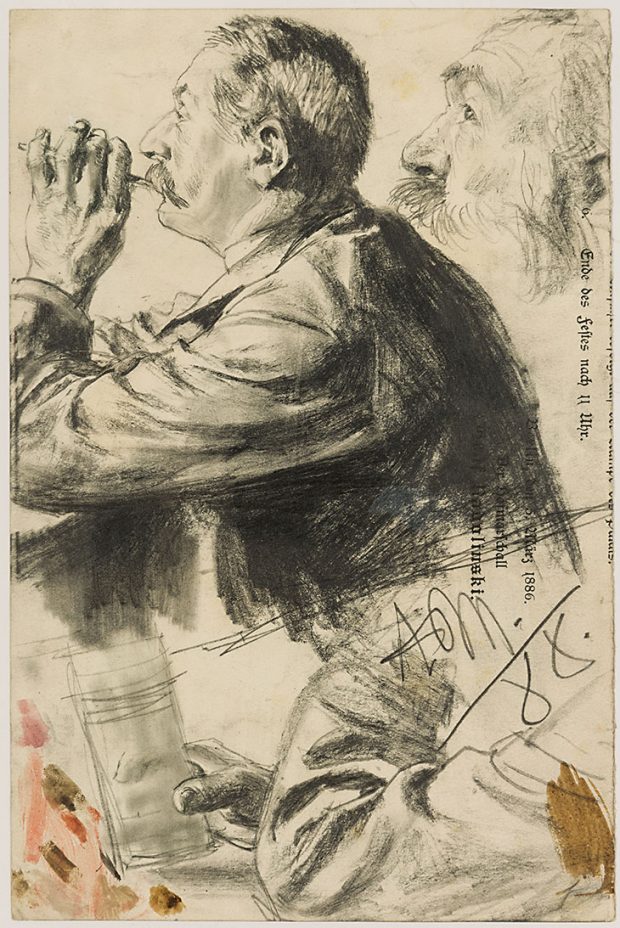
Studies of a Man Smoking, in Profile (1888), Adolph Menzel. Courtesy Stephen Ongpin Fine Art
Wearing a large overcoat that had eight pockets filled with sketchbooks, he would draw standing up, his wrist stiffened in what has been described as a ‘clawlike fashion’. The books doubled as personal diaries. ‘They are my memories. They contain things that are extremely personal to me,’ Menzel said just a year before his death in 1905. It was then that 4,000 sheets were discovered in his studio and transferred to the National-Galerie in Berlin, where they remain. With only some 18 works in UK permanent collections, and the most recent museum show being the Fitzwilliam’s in 1984, Menzel remains relatively little known here.
A new exhibition of Menzel’s drawings has opened at Stephen Ongpin Fine Art to coincide with London Art Week. The works date from the 1840s to 1898 and include landscapes, portraits and genre studies. Unlike Afternoon in the Tuileries Garden (1867), a painting acquired by the National Gallery in 2006 that takes an almost panoramic view of bustling Parisian life, the sketches focus on isolated figures that we might easily have missed. A Seated, Elegantly Dressed Lady Eating From a Plate (1878), in which a young woman at a ball tries to protect her frilly dress by awkwardly leaning over a bowl of soup, contains hints of light derision. Menzel admitted that he enjoyed the balls for their ‘super-subtle differences of status and position, taste and non-taste […] in the most impressive and the most wretched of human specimens’.
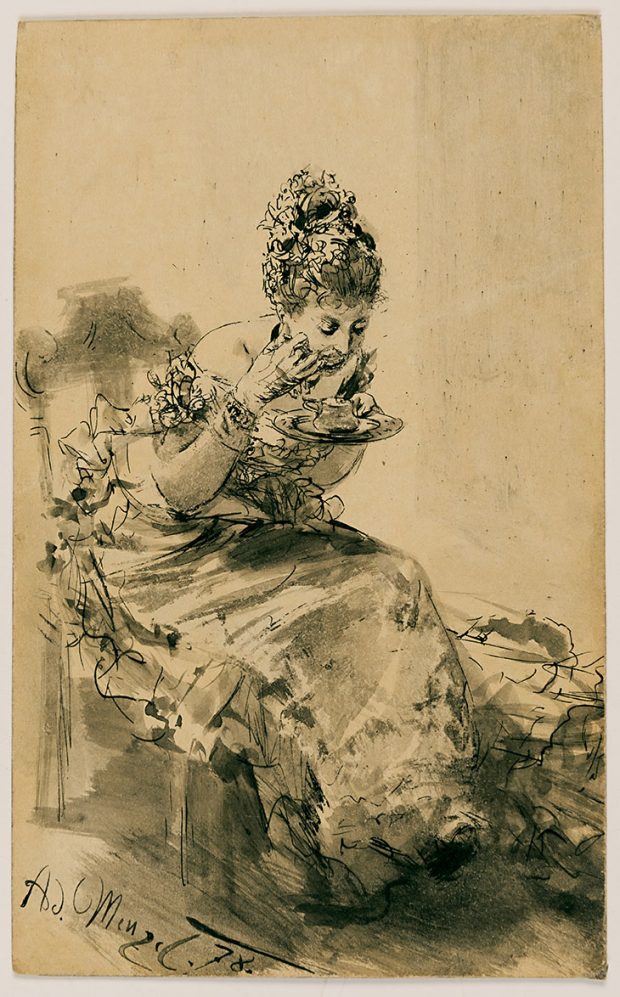
A Seated, Elegantly Dressed Lady Eating from a Plate (1878), Adolph Menzel. Courtesy Stephen Ongpin Fine Art
The drawings are done in pencil, pastel, chalk and ink and make generous use of stumping to blend and smudge the markings. In Studies of Three Men (1886), dense strokes of chalk combine to produce weathered skin in eerily lifelike flashes that quickly dissolve into loose silhouettes. A Bearded Man Looking Down to the Left (1891) is perhaps the simplest but most striking work. A detailed textural study of a man’s hair and beard, the faint, upright wisps of hair remaining on his head slowly gather into rolling, undulant curls and finally the hazy, thicker fuzz of facial hair emerges from light grazes of graphite. The few works in gouache and watercolour look out of place and, in contrast to the Menzel’s perceptive use of pencil, their effects are flat and unsophisticated.
The preparatory sketches in Ongpin’s show have been usefully paired with images of the paintings they would become, yet can be equally admired as works in their own right. Menzel is a figure who has been unfamiliar to the British public for too long and this gathering of 42 sketches is not to be missed. It is a start, and reveals much about his eye and his outlook.
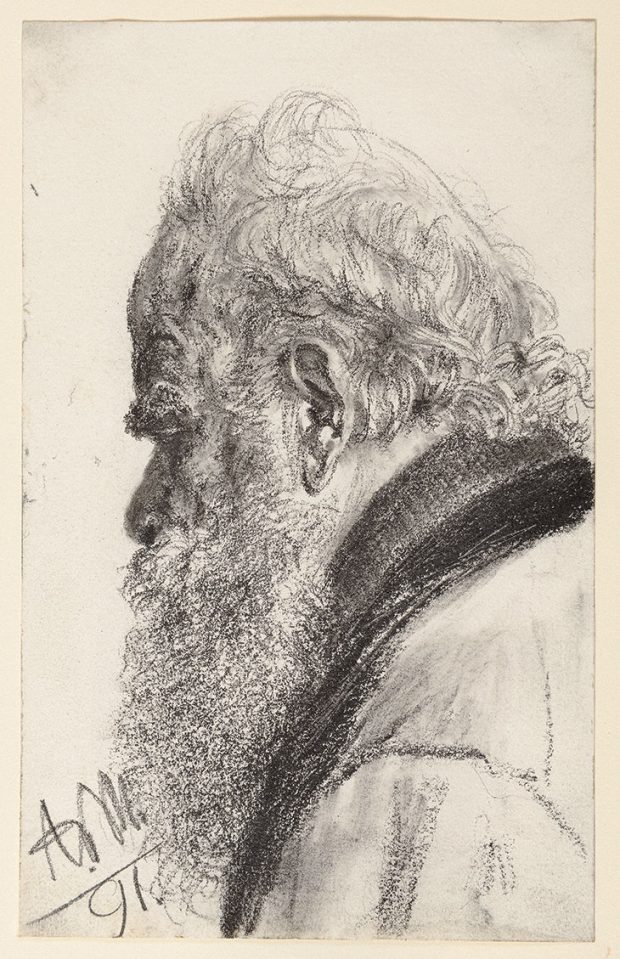
A Bearded Man Looking Down to the Left (1891), Adolph Menzel. Courtesy Stephen Ongpin Fine Art
‘A World Caught with the Eye and Held by the Pencil’: Drawings by Adolph Menzel is at Stephen Ongpin Fine Art until 24 July.
Unlimited access from just $16 every 3 months
Subscribe to get unlimited and exclusive access to the top art stories, interviews and exhibition reviews.

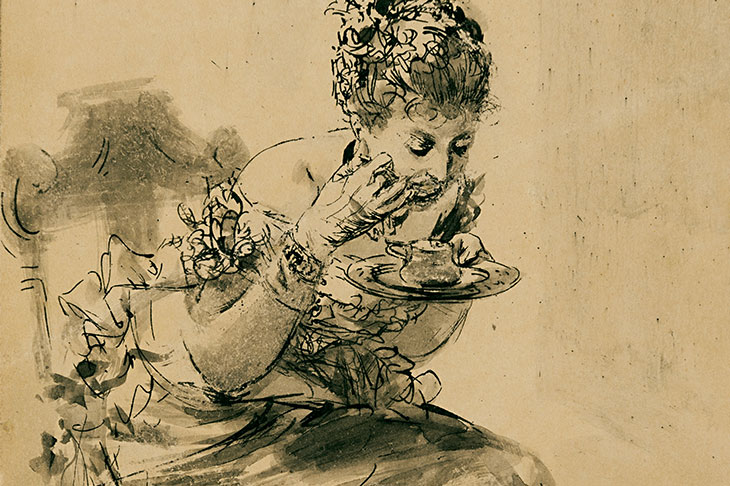

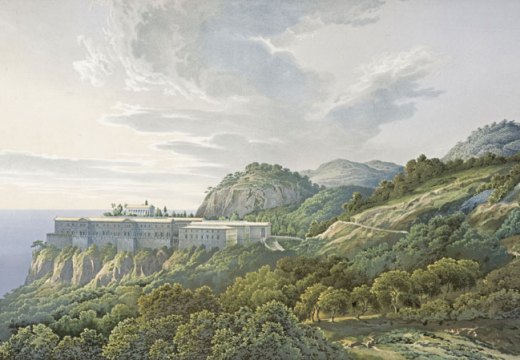
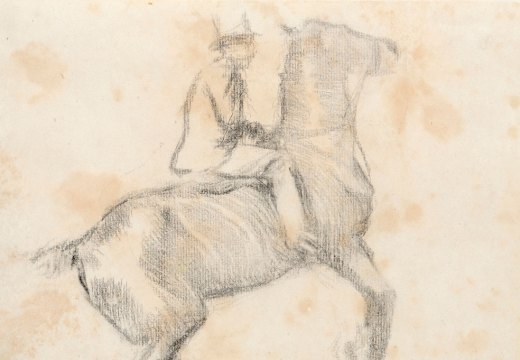









![Masterpiece [Re]discovery 2022. Photo: Ben Fisher Photography, courtesy of Masterpiece London](http://www.apollo-magazine.com/wp-content/uploads/2022/07/MPL2022_4263.jpg)
Why are fathers so absent from art history?